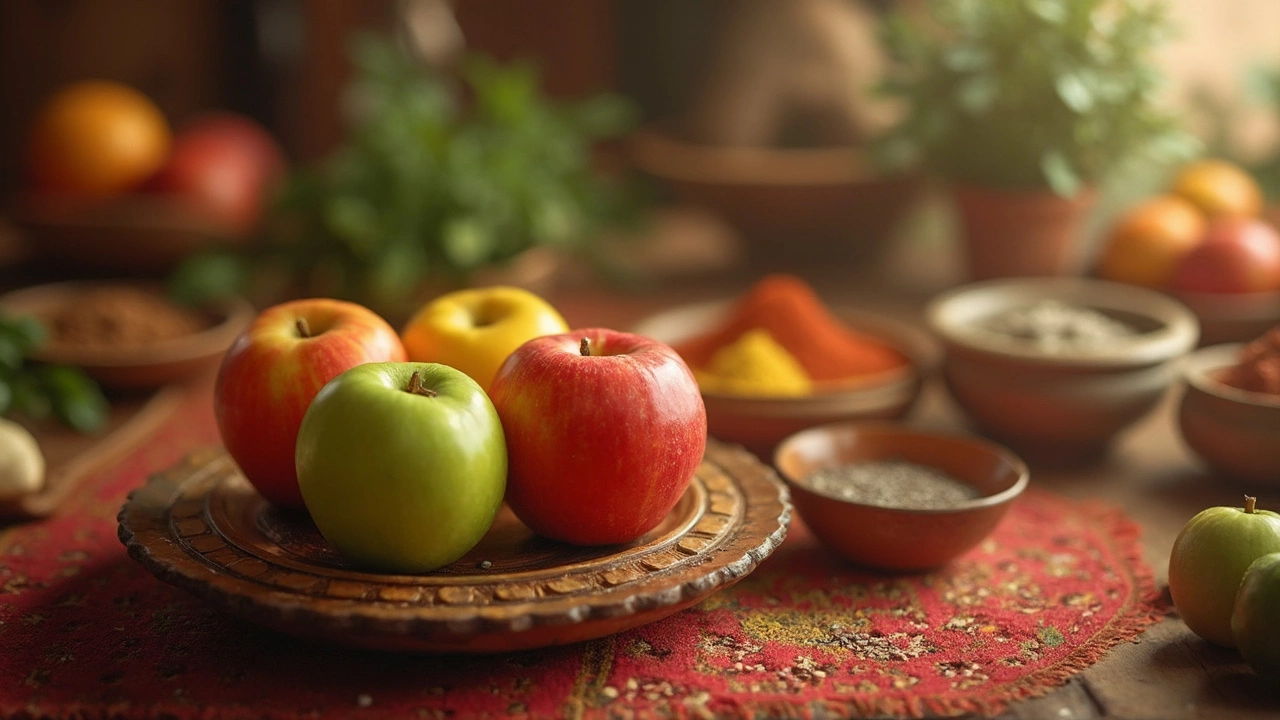Red Apples – Your Everyday Superfruit
When talking about red apples, crisp, sweet‑tart fruits that belong to the species Malus domestica, also known as gala, fuji, and honeycrisp varieties, you’re dealing with a snack that’s both tasty and nutritious. Antioxidants, compounds like quercetin that fight free radicals are packed into every bite, while dietary fiber, mostly soluble pectin that promotes gut health helps keep your digestion humming. These two entities together make red apples a natural choice for anyone eyeing better health without sacrificing flavor.
Why Red Apples Shine in Nutrition and Wellness
Red apples deliver a solid dose of vitamin C, a water‑soluble vitamin essential for immune function and collagen production, which teams up with the antioxidant load to boost your body’s defense system. The fiber content not only supports steady blood sugar levels but also contributes to lower cholesterol – a classic heart‑friendly combo. In fact, research shows that eating a medium‑sized red apple a day can reduce risk of chronic diseases, thanks to the synergy: red apples provide antioxidants and fiber that together support cardiovascular health and weight management. If you’re tracking nutrition, note that a single fruit offers about 4 grams of fiber and 8 % of the daily vitamin C requirement, making it a simple, portable power‑food.
Beyond the raw snack, red apples fit smoothly into Indian kitchens, especially when you explore the world of chutney, a condiment that blends fruit, spices, and tangy notes. Apple chutney pairs the fruit’s natural sweetness with mustard seeds, curry leaves, and a splash of vinegar, creating a balance that brightens everything from rice dishes to flatbreads. This crossover shows how the fruit’s acidity and texture enhance traditional Indian flavors, turning a simple side into a star. The same principle applies to apple‑based raitas or even a quick apple‑and‑coconut salad that can accompany a steaming bowl of dal, proving that red apples are as versatile as they are nutritious.
If you’re looking for quick, healthy meals, try slicing a red apple into your morning oatmeal, tossing chunks into a quinoa bowl with roasted veggies, or blending it into a smoothie with a pinch of cardamom—a nod to Indian spice profiles. For a heartier option, simmer peeled apples with ginger, cinnamon, and a bit of jaggery to craft a warm compote that can sit atop a serving of plain rice or act as a glaze for paneer. These ideas draw from our collection of articles on fruit nutrition, chutney safety, and spice combos, giving you practical routes to integrate the fruit into everyday cooking without any guesswork.
All that said, the real value of red apples emerges when you see them through both health lenses and culinary lenses. Below you’ll find a curated set of posts that dive deeper into antioxidant science, fiber benefits, chutney preparation, and creative Indian‑style recipes featuring this beloved fruit. Whether you’re after pure nutrition facts or fresh kitchen inspiration, the articles ahead will equip you with the knowledge and tricks to make red apples a regular, rewarding part of your diet.

Apple Calories Breakdown: Green vs. Red vs. Yellow Apples
Discover the calorie content of different apple types—green, red, and yellow—and learn how they fit into a healthy diet. This article breaks down the nutritional differences between these apples and provides tips for integrating them into your meals. Included are the benefits of adding chia seeds (known as "chia seeds in hindi") and suggestions for enjoying apples to maximize well-being, with insights from the perspective of well health organic approaches.